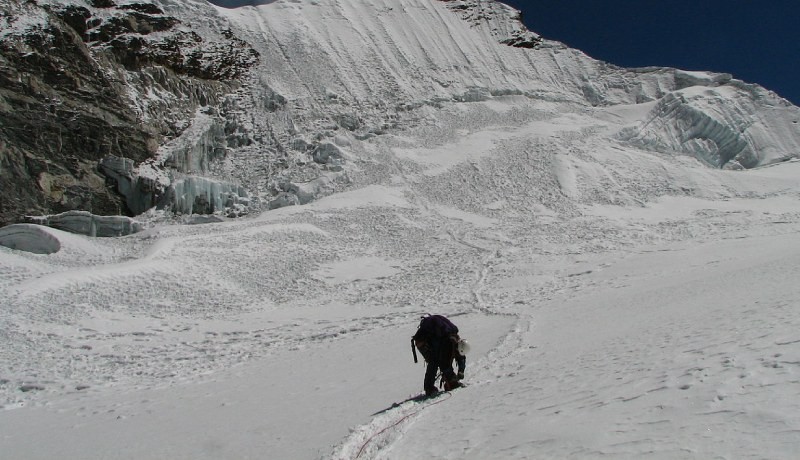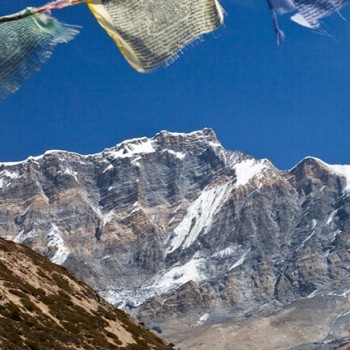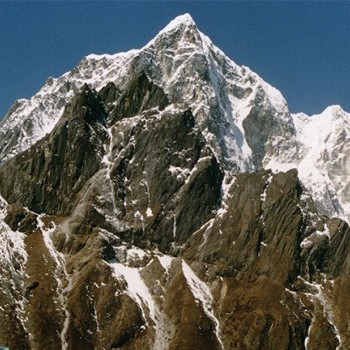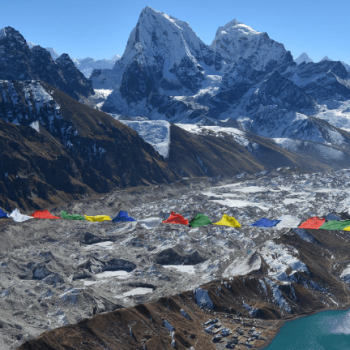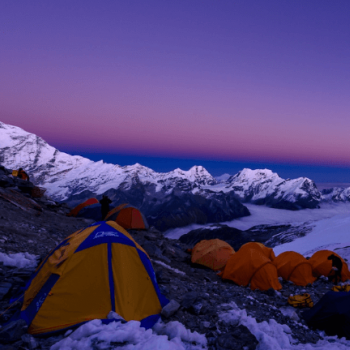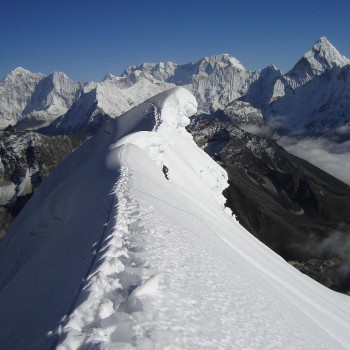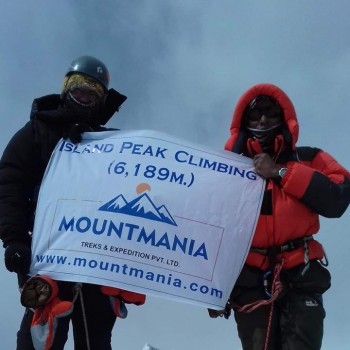Trip Details
Destination: Nepal
Trip Difficulty: Strenuous
Trip Style: Trekking and Climbing
Transport: Public Vehicle
Food: Breakfast, Lunch & Dinner
Accommodation: Teahouse or Lodge
Group Size: 16
Max Elevation: Saribung Peak (6328m)
Highlights
- Climbing the third-highest trekking peak in Nepal, Saribung Peak (6328m).
- Gorgeous view of the sunrise and sunset overlooking the snow-capped mountains of the region
- Exploration of Upper Mustang, Nar Phu valley, and The Hidden Valley.
- Trekking in the geographically diverse landscapes that ranges from lush alpine forests to barren, arid desert-like landscapes
- Visit old monasteries and 2500 old caves of the region
- Tasting the delicious local cuisine
- Exploring the Tibetan influenced cultural, tradition and lifestyle of Gurung, Magar, and Sherpa ethnic groups
- Incredible hospitality of the Nepalese people.
- Scenic flight from Pokhara to Jomsom
Description
Saribung Peak (6328m) lies in the remote Mustang region in the midwest of Nepal. This spectacular trekking peak has only been available for climbing recently. The Saribung Peak climbing package also includes challenging trek on steep passes and harsh terrains.
Saribung Peak expedition takes you through the dry landscapes of Upper Mustang, Jomsom, Nar Phu valley, and the Hidden Valley. The off the beaten trails pass through cliff sides and ancient settlements that have remained intact for centuries. You will also pass through ice creases in the Nar-Phu valley and the Damodar Kunda region.
Trekkers can explore the diverse culture of the region as well. The Tibetan influenced the culture of the villages, and the religious monasteries will spellbind you. You can also capture the beauty of the place in your cameras. The scenic landscapes, geographical variations, and unique cultural settlements will amaze you.
One exciting aspect of Saribung Peak climbing is that it is possible both clockwise and anti-clockwise. The clockwise trek starts from Jomsom in the Upper Mustang region, and an anti-clockwise trek starts from Phu and then ascends to the Saribung pass. You can observe the majestic snow-capped mountains, including Annapurna II, Nilgiri Himal, Himlung Himal, Lamjung Himal, Mt. Manaslu, and others.
Only a few climbers have managed to summit the Saribung Peak. Hence, the Saribung Peak climbing expedition is an excellent opportunity for those who want to explore the off the beaten region in Nepal and gain climbing experience. So are you up for an adventure in the virgin landscapes of the Mustang region in Nepal?
We are offering this exciting Saribung Peak climbing package at a reasonable cost. Read further to learn about the detailed itinerary of this expedition and book your trip now!
Useful Information
About Route
Our journey in the Himalayas starts with a scenic drive from Kathmandu to Pokhara. We pass through the winding hilly highway overlooking the activities of the local people along the way. The view of the roadside hotels and settlements will amaze you.
We will take a scenic mountain flight from Pokhara to Jomsom. Our trek journey starts from Jomsom as we head towards the North in Kagbeni. The beautiful trail passes through the incredibly diverse landscapes and several ancient gompas and villages as we head towards Lo Manthang.
We explore around Lo Manthang for a day and then continue our trek to Yara and Ghuma Thanthi. The trail then leads us to the Saribung Base Camp. We then climb the Saribung Peak that is completely covered in ice and creases. These factors make the which makes the Saribung Peak climbing difficult.
For the climb, we need to properly pack necessary climbing gear and equipment and follow the footsteps of the veteran Sherpa guides. We tackle some technical climbing sections to arrive at the Saribung Peak summit. You can observe the breathtaking views of the snow-capped mountains, including Gyajikang, Himlung, Bhrikuti, and others.
We spend some quality time at the top of the summit and descend gradually. The trail then goes along Nar Phu valley from the Saribung Base Camp. We then pass through the villages of Meta and Koto to arrive at Dharapani. Our Saribung Peak Climbing ends with a scenic drive from Dharapani to Kathmandu through the zig-zag winding hilly roads.
When is the Best Time for Saribung Peak Climbing?
Saribung Peak climbing is ideal during the Autumn (September-November) and the Spring (March-May) season. The favorable weather conditions and the moderate climate make for a great climbing expedition.
Autumn Season
The Autumn season (August-November) is the peak season for climbing and trekking in the Himalayas. Thousands of trekkers and climbers flock the region to trek the Himalayan landscapes from all over the world. You can complete the trek in a pleasant and stable environment. Autumn season comes after the monsoon hence you will get stable weather with minimal precipitation.
Spring Season
The Spring season (March-May) makes the environment scenic, with wildflowers blooming all over the hills and painting them red and pink. The silver snow-capped mountains on a clear blue sky look incredibly beautiful. You will get a pleasant trekking and climbing experience in spring along with stable weather.
Winters come with freezing conditions and snowfall over the region. While the Upper Mustang region remains dry throughout the year, the lower region has the risk of landslides and avalanches in monsoon. Hence, the Autumn and Spring season is the ideal time for Saribung Peak climbing.
How Difficult is Saribung Peak Climbing?
The Saribung Peak climbing is a relatively straight forward peak ascension with less technical sections. However, the challenging trail covered in slippery ice can pose a threat for first-time climbers.
Trekkers and climbers need to be physically and mentally fit to complete this trek and the Saribung Peak climb. Moreover, the challenging trail passes through high cliffs and isolated villages. Besides that, the Saribung Peak Climbing route also passes through the ice creases between the Nar-Phu valley and the Damodar Kunda region.
Since this is a high altitude trek, altitude sickness is a big problem for trekkers. The high altitude region has minimal oxygen levels and air pressure. Acclimatization and regular hydration are essential to tackle altitude sickness. However, the breathtaking views of the snow-capped mountains will compensate for all the struggle.
Furthermore, the environment in the mountains comes with freezing temperatures, harsh winds, and dust. You will need to trek for 6-7 hours a day for almost three weeks. The unpredictable weather conditions are also a challenge during the trek. Overall, with proper preparation, strong physical fitness, and determination, you can complete the Saribung Peak climbing with ease.

